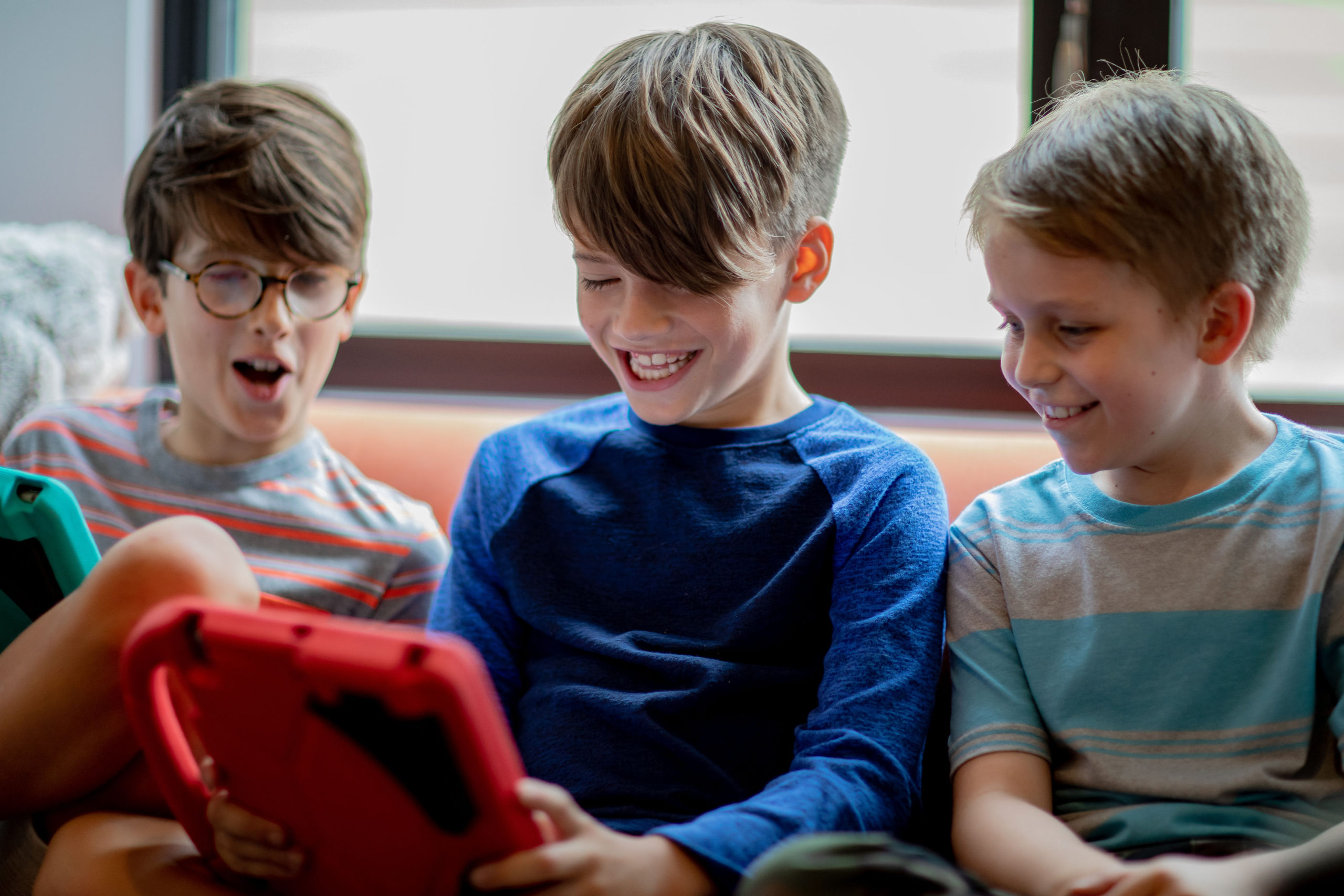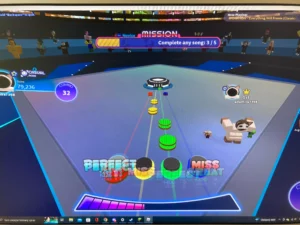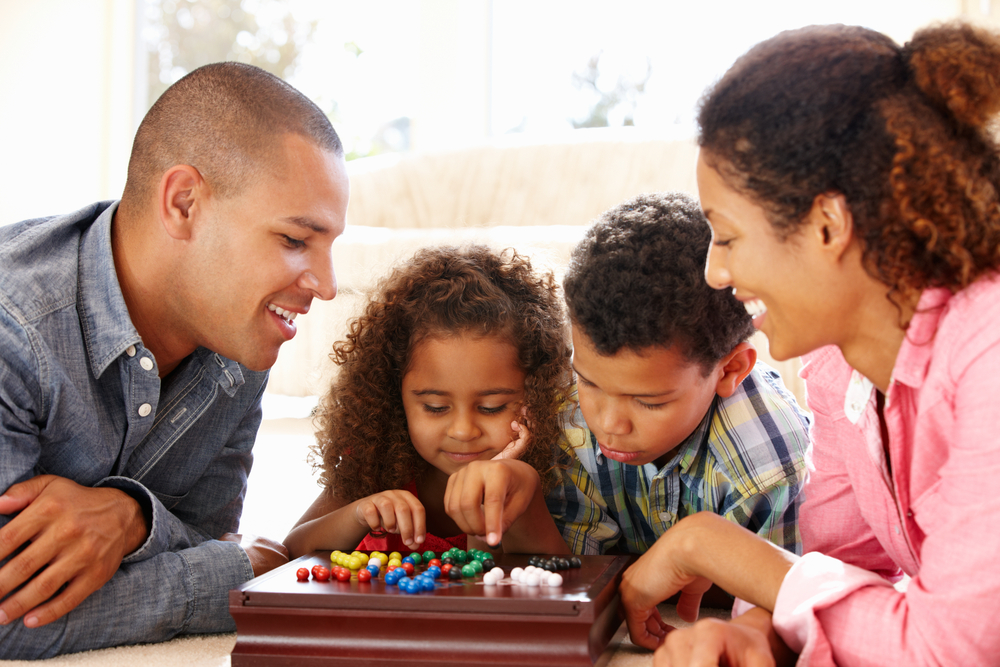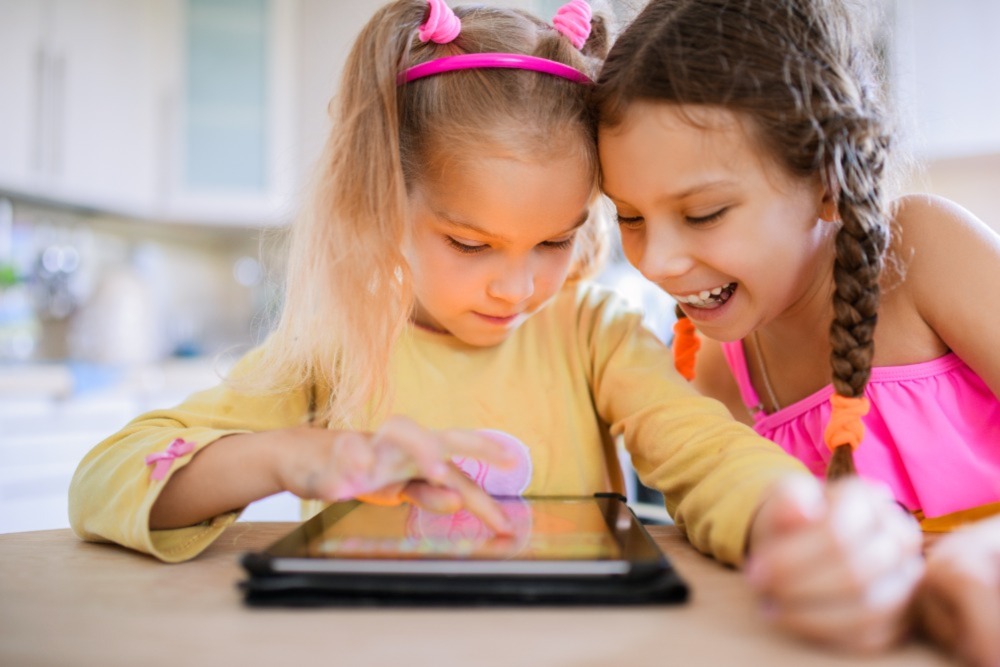Can Grinding in Video Games Actually Teach Your Child Important Life Skills?
Don’t worry — we’re not talking about your 90s dance moves here. “Grinding” in the video game world refers to performing tasks repetitively. Though your child playing the same level over and over again may seem boring, it actually has a lot of benefits – both in creating gaming and real-life skills.
Even gaming experiences that aren’t overtly educational — like the millions of games on Roblox or those simple running and dodging games (Ryan’s World, Jumanji, Subway Surfers, etc) — are helping your child learn. And as they play, they’re leveling up their characters and their own skills.
Video games can help your child (and you) develop coordination and psychomotor skills. And though the ability to quickly push a button may not seem an important life skill, it has far more benefits than you might think.
Psychomotor speed is more than hand-eye coordination
At Kinjo, we rank Roblox mini-games based on the skills your child can learn while playing them. This includes everything from ethical decision-making to pattern recognition. But one that often gets dismissed by parents and educators is psychomotor speed.
What is psychomotor speed?
Psychomotor speed refers to the speed at which information can be sensed, perceived, understood, and responded to. For example, how quickly can you see something new, process it, and effectively react to it? This is a skill you use every day if you’re driving or typing.
When your child plays video games, they’re constantly processing new information that requires them to think and react quickly. And like any other skill, psychomotor speed requires practice and perseverance to master.
Practicing psychomotor speed
Psychomotor speed can be practiced in a variety of ways. But for kids today, video games are one of the best ways to practice and improve these sensorimotor skills.
Of course, video games aren’t brand new. You’ve likely played a few yourself (you know, back in the day 
Whether you mastered the final song or struggled through “More Than a Feeling”, you were strengthening your psychomotor skills as you shredded those solos. But it didn’t happen overnight. There were many psychomotor steps you took on your quest for star power.
Video games encourage independent learning
In the late 1960s, Ravindra H. Dave classified five different stages of psychomotor skills. Even though these observations were made a few years before the first arcade games, they perfectly describe today’s video game playing process.
If you take some time to watch your child game, you can easily see the skill progression. In fact, many games use this criterion to measure a player’s speed, dexterity, and precision. How you perform determines if you’re ready for the next task or level.
What’s truly exciting to see is how these stages create a way for children to learn independently. Walking through each of these steps helps a child learn how to learn. And that is a skill they can use throughout their lifetime. Here are the five stages of psychomotor speed development.

The five stages of psychomotor speed development
- Imitation
As parents of gaming kids, we’ve all wondered “how can they just stare at other gamers playing for hours??” But, if you reframe the situation, this is your child’s way of learning from a teacher in their chosen craft.
Before their own practice and repetition start, your child is observing, learning, and copying someone else. Some of us may have children that jump right into new experiences. But if your child is watching all of the YouTube gamers, they’re in this first stage of development — gathering new info before they start playing themselves.
- Manipulation
The second stage is where your child is guided via instruction to perform a skill. Now that your child has finished observing the gaming YouTube masters, they’ve finally decided they’re ready to begin playing themselves.
If it’s a new-to-them game, the next step is the game tutorial. Here they’ll be prompted to perform simple tasks to learn the ins and outs of their game’s controls. This only covers the basics but sets them up for later success.
Of course, some kids will skip right over the tutorial, choosing to learn by trial and error or with the help of a friend. Either way, this first-hand discovery of the basics is still necessary to advance to the next stage.
They can stay in this stage as long as they like, or choose to come back to it as needed to work on a new skill.
- Precision
As your child works their way through the game, they begin to move into this third stage — precision. Here they practice performing tasks with more accuracy and exactness.
In this stage, they no longer are using the tutorial or a mentor, but are rather making these strides in learning on their own. This takes immense patience and perseverance.
- Articulation
After a lot of practice, your child has mastered the basics. And they’re now able to perform two or more sequenced skills consistently.
In video games, this may look like those classic fighting combinations (sweeping down while hitting the punch button) or being able to methodically hit those four fret chords in Guitar Hero. Awesome!
- Naturalization
At this point in your child’s gameplay, they have obtained complete mastery. Not only can they perform all the needed tasks with skill and precision, but they can do it with ease.
Their skills in this one game (or on a certain level of a game) now appear automatic, with little physical or mental exertion. They can simply run through it, making it look easy. But this only happened after a lot of work and practice.
At this point, your child may abandon this game completely, moving on to the next challenge. Or you may notice them coming back to this game as a sort of comfort (like when you rewatch The Office for the 8th time). Either way, reaching this level is a massive achievement to be celebrated.
Now think back once again on those Guitar Hero days. How far did you make it towards psychomotor mastery? Could you pick it up and jump right back in today? Give it a try!
Why is psychomotor speed an important life skill?
This is all well and good (and a lot of fun), but how are these video game skills actually going to help your child navigate the world? Well, in addition to slowing down the cognitive signs of aging, there are other skills psychomotor speed can help them develop and improve.
- Teaches perseverance
As your child practices the hand-eye coordination needed to defeat their next video game boss, they’re getting to practice patience and perseverance. They have to work up to these skills, and that means a lot of ‘failing’ along the way.
Of course, there will be times when they feel a lot of frustration (all gamers have experienced the rage quit). But learning to work through those moments, taking breaks when needed, and then coming back to try again is a skill many of us need to use in our daily lives.
- Helps with decision making
This is a big one! Remember, psychomotor speed is all about quickly sensing information and then reacting accordingly. There are hundreds of little micro decisions your child is making as they play video games. And these mini choices are building their decision-making skills and confidence.
Video games also improve your child’s perception and adaptability. They can better observe their current situation, discern the most important information, and then shift their priorities as needed to reach a final goal.
The best part about learning important life skills from video games — it’s fun! There are no stern talks needed to convince kids this is important and therefore should be practiced. They’re already playing these games and they’re excited to continue practicing these skills. And because they’re happy to practice, the learning and skills these games teach are more likely to stick.
Find the best games for learning (that kids actually love to play)
There’s a lot of learning to be had from video games — from decision-making skills to navigating social situations. But not all games are created equal.
If you’re on board with video games being a valuable learning tool, but want more information on maximizing your child’s experience, check out Kinjo! We have apps for both parents and gamers to help you and your child navigate the complex world of Roblox.
With Kinjo’s help, you can learn about the best Roblox games for skill-building (in a sea of 40 million+ games!) while your child builds more friendships and confidence in their favorite spaces. Now you can ditch the parenting guilt and allow your child to enjoy all the benefits of gaming, worry-free!
Visit the app store today and download our Kinjo – Play Smart and Earn to get started!









